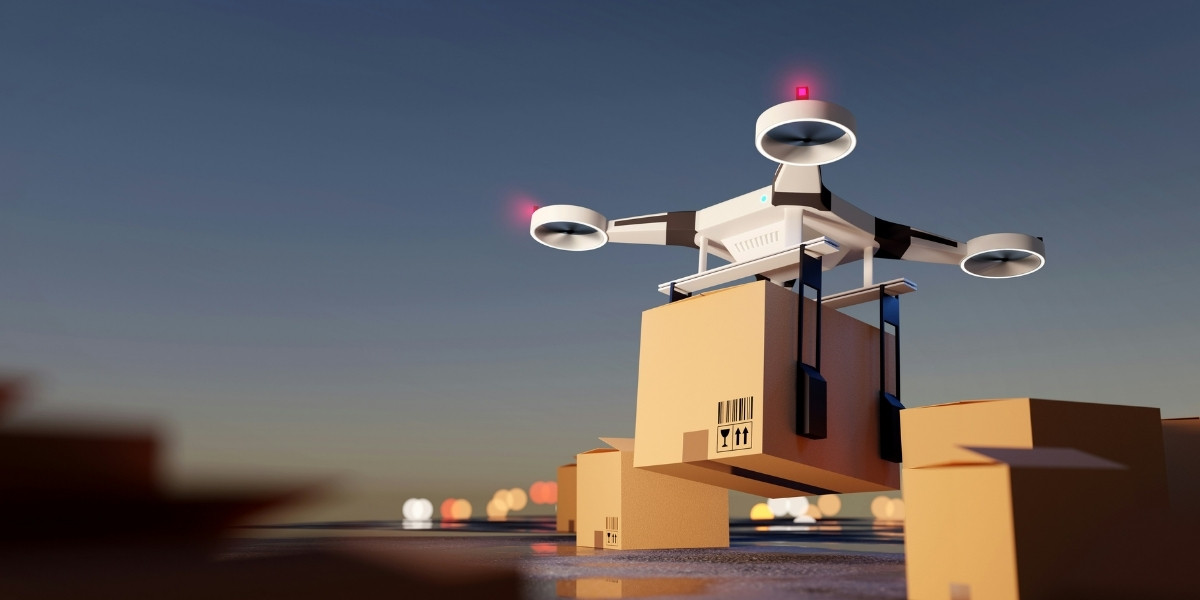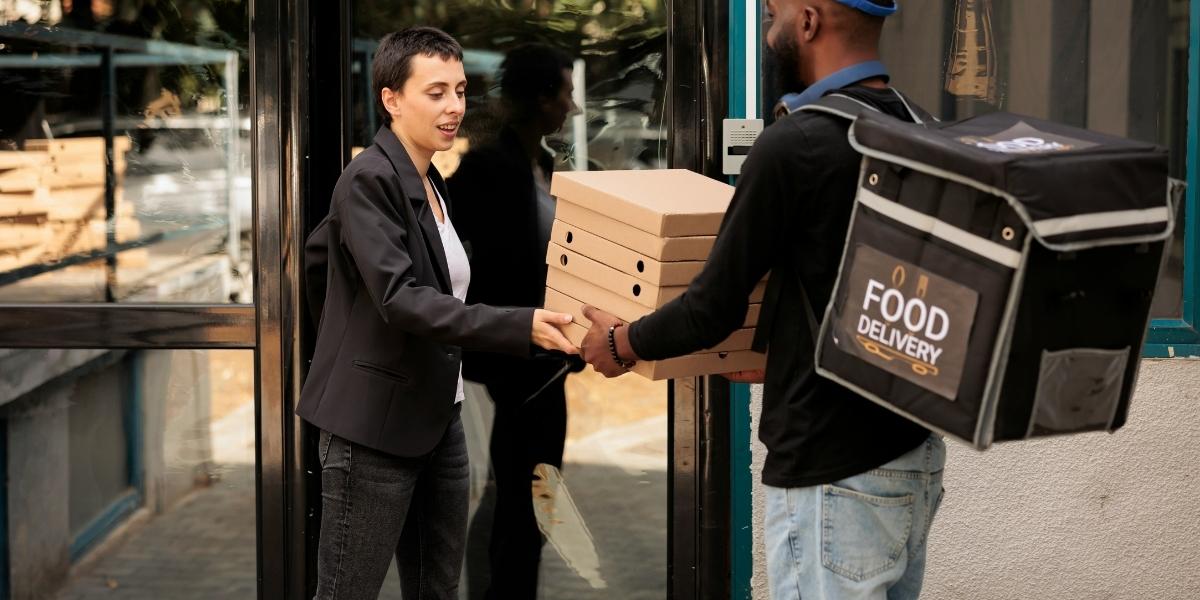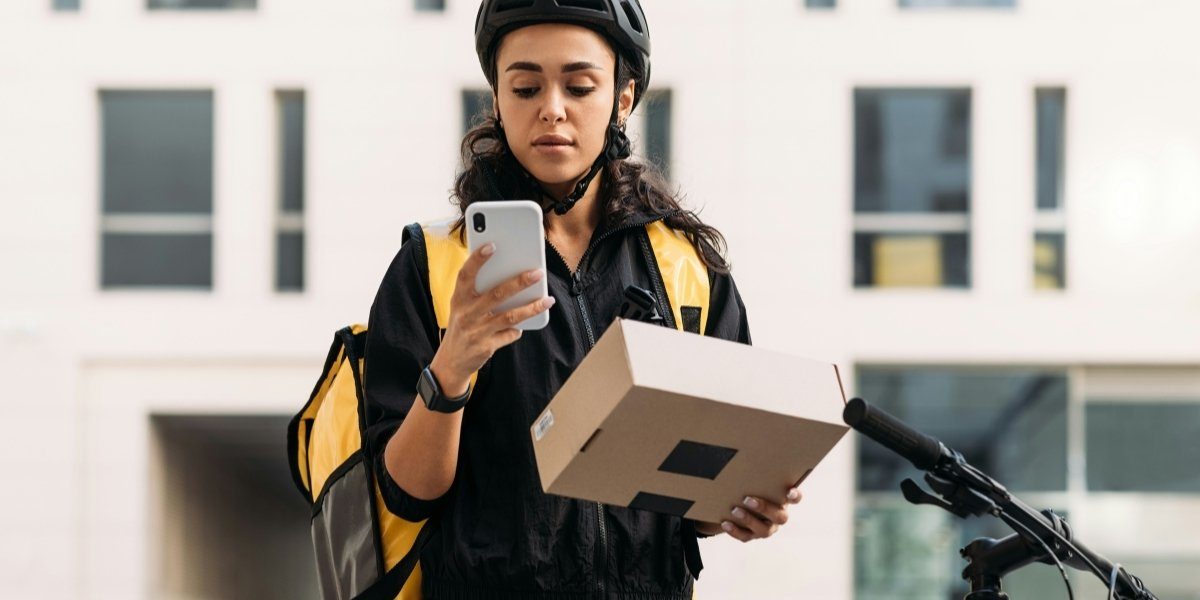The idea of robots delivering food may sound futuristic, but it’s quickly becoming a reality in the U.S. With advancements in artificial intelligence and robotics, food delivery is on the brink of a major transformation. AI-powered robots are starting to hit the streets, and their impact on the delivery market could be profound. These robots could revolutionize how food is delivered, offering a faster, more sustainable solution. But will they really reshape the U.S. delivery market? Let’s take a look at how AI-powered delivery robots are poised to change the industry.
Read also: How AI Personalizes the Entertainment Experience
How Are AI-Powered Robots Changing the Delivery Market?
AI-powered food delivery robots are not just a passing trend; they represent a significant shift in how deliveries are made. Unlike traditional delivery methods that rely on human drivers, these robots operate autonomously, navigating city streets using AI, sensors, and cameras. This new approach brings a number of benefits that could ultimately transform the delivery market.
One of the biggest advantages is efficiency. These robots are able to move faster and more directly than human drivers who may be stuck in traffic or navigating complex road systems. With no need for breaks or rest periods, the robots can work around the clock, ensuring that food reaches customers quickly and reliably.
Another benefit of AI-powered delivery robots is their sustainability. Unlike cars or delivery trucks that rely on fossil fuels, many of these robots are electric, reducing the carbon footprint of food deliveries. As environmental concerns grow, this eco-friendly alternative could become increasingly popular with consumers and businesses alike.
Moreover, these robots also offer a level of consistency and precision that human drivers simply can’t match. They can follow programmed routes, avoiding traffic and roadblocks, and ensuring deliveries are made on time. This increased reliability could lead to greater customer satisfaction, which is always a key driver in the success of any business.
Are Consumers Ready for AI-Powered Food Delivery?

Photo Credit: Unsplash.com
Although the technology is impressive, the question remains: are consumers ready to embrace AI-powered food delivery robots? While some may be excited about the prospect of seeing a robot delivering their meal, others may be hesitant. Trust in autonomous systems will be a key factor in whether or not this new method of delivery can succeed.
One of the primary concerns is the safety of the robots. Customers may worry about the reliability of the technology or whether the robots will be able to handle unforeseen obstacles. Issues like traffic, pedestrians, and unpredictable weather could pose challenges to AI-powered robots, raising doubts about their ability to perform in real-world conditions.
Additionally, there are concerns about the potential for job loss. With AI robots taking over certain aspects of food delivery, many fear that human delivery drivers could be displaced. While robots may make deliveries more efficient, it’s important to consider the economic and social implications of widespread automation.
Despite these challenges, many consumers are already familiar with the idea of using technology to facilitate their daily lives. The increasing popularity of food delivery apps has shown that consumers are eager for convenience. As AI-powered robots become more reliable and integrated into the delivery ecosystem, it’s likely that more people will come to accept and even prefer this new way of getting their meals.
What Challenges Do AI-Powered Delivery Robots Face?
While the potential benefits of AI-powered food delivery robots are clear, there are still several challenges to overcome. These challenges could delay the widespread adoption of this technology in the U.S. delivery market.
One major issue is regulation. Different states and local governments have varying laws regarding the use of autonomous vehicles. Some regions have already embraced delivery robots, while others are still figuring out how to integrate them into existing infrastructure. Navigating these regulatory hurdles will be crucial to ensuring that AI-powered robots can operate efficiently and legally across the country.
Another challenge is technology. While AI and robotics have made significant strides in recent years, there are still technical issues to address. For example, these robots rely on sensors and cameras to navigate, but they can struggle with complex environments, such as crowded streets or poorly marked roads. As technology continues to improve, these obstacles may become less of an issue, but for now, it’s a hurdle that must be addressed before the robots can be used in every urban area.
Lastly, there are logistical challenges. For instance, robots are typically limited in their payload capacity. A food delivery robot can only carry a limited number of orders at a time, which could make scaling the technology difficult. Additionally, the robots’ battery life and the distance they can travel are important factors to consider. Longer trips may require more battery power or a charging infrastructure that currently doesn’t exist.
What Does the Market for AI-Powered Food Delivery Robots Look Like?
The market for AI-powered food delivery robots is growing rapidly, and projections show that it could be a billion-dollar industry in the coming years. According to reports, the North American food delivery robots market is expected to grow from $0.2 billion in 2024 to $1.1 billion by 2033. This growth is driven by both consumer demand for faster, more efficient deliveries and the scalability of autonomous delivery solutions.
Investments in food delivery robotics are also on the rise, with companies in the industry securing billions of dollars in funding. As this technology continues to improve, more businesses are likely to jump on board. Some restaurants are already partnering with delivery robot companies to offer a more efficient service to their customers. This trend will likely continue, with more companies in the food industry adopting robots as part of their delivery infrastructure.
Will AI-Powered Robots Become the Norm?

Photo Credit: Unsplash.com
Will AI-powered robots eventually become the norm in food delivery? While it’s difficult to say with certainty, the signs point to significant growth in this direction. AI technology is improving rapidly, and consumer demand for convenience and sustainability is on the rise. As long as the technology continues to improve and the regulatory environment becomes more favorable, it’s likely that robots will play an increasingly larger role in the delivery market.
That said, there are still many challenges to overcome. Whether it’s ensuring consumer trust or solving technological limitations, the road ahead will require continued investment and innovation. However, the potential benefits, such as faster, more reliable, and eco-friendly deliveries, make the future of food delivery robotics an exciting one to watch.
Read also: How Food Noise Impacts Mental Health
What’s Next for AI-Powered Food Delivery?
The future of AI-powered food delivery is still unfolding, but one thing is clear: it’s an exciting time for the delivery market. With advances in AI, robotics, and consumer demand for faster, more sustainable solutions, the market for autonomous delivery is only going to grow. Over time, AI-powered food delivery robots could become an integral part of the delivery experience, providing businesses and customers alike with a more efficient and sustainable alternative to traditional delivery methods.
As the technology evolves and challenges are addressed, the impact of AI-powered food delivery robots on the U.S. market could be profound, reshaping the way food is delivered across the country.








